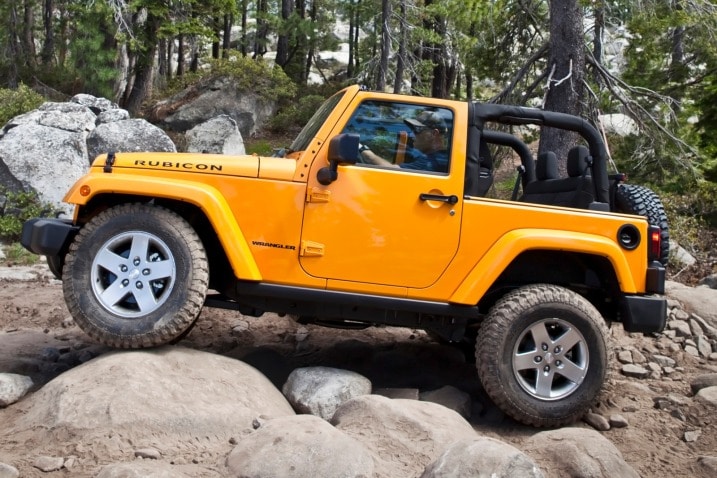The High and Low of It
Most 4WD systems have low and high ranges that can be selected by the driver, usually with an electronic switch. Jeep's venerable
Wrangler, however, still uses a floor-mounted, mechanical lever.
Whether electronic or mechanical, the 4WD's low setting provides even greater torque for pulling or climbing in an off-road environment. The setting's low gearing also makes it easier to descend steep slopes on unstable surfaces without using — and burning up — the brakes.
The 4WD's high setting is the default setting and is useful for slippery on-road situations, such as packed snow or ice or loose sand or gravel.
How To Pick Your Drive
Despite their higher costs, these four-driven-wheel systems do make sense for a lot of people. They offer greatly improved traction on all kinds of surfaces, and, depending on the system type, can improve towing ability.
Both AWD and 4WD introduce greater complexity to the drive system, adding both weight and cost. The extra weight robs the AWDs and 4WDs of some fuel efficiency: typically 4-9 percent in cars and 5-10 percent in trucks. Cost premiums for these vehicles typically run from about $1,000 up to nearly $4,000.
Because of their additional maintenance needs and lower fuel economy, they also increase total ownership costs compared to two-wheel-drive versions of the same vehicles.
But those costs can pale in comparison to the cost of repairing damage to an ill-equipped two-wheel-drive vehicle that's been operated in rugged terrain or on nasty snow- and ice-slicked roads.
Also helping to offset those extra costs is the fact that vehicles with AWD or 4WD system usually have higher resale or trade-in values than their two-wheel-drive counterparts, especially in areas where inclement winter weather and rough terrain make such systems popular.


